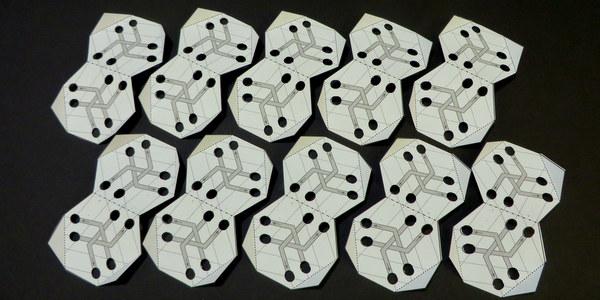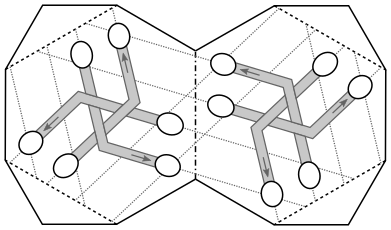[This is post #20 in a mini-blog-post series for NaBloPoMo 2015. Jump to the first , previous, or next post.]
Yesterday I asked what differentiates one of these from the other two:

The answer: color scheme! They all have 5 tetrahedra, one in each color, but they’re not positioned in the same way every time. The two Straws Thingys on the edges are identical, though it’s not apparent until we rotate one to match the other:

To avoid motion sickness, here’s that final frame again. Check that the colors match perfectly in the two assemblies:

By contrast, when comparing one of these “original” Straws Thingys with the remaining “odd one out” (pictured above, center), the colors refuse to match up, try as you might to rotate them into alignment. We can get pretty close, though: below, only green and yellow have swapped places. (The “original” is on the right, with the “odd one out” on the left.)

Does this mean we get a third unique color scheme if we swap, say, green and blue instead? How many colorways are possible in total? Let’s investigate this tomorrow.
































